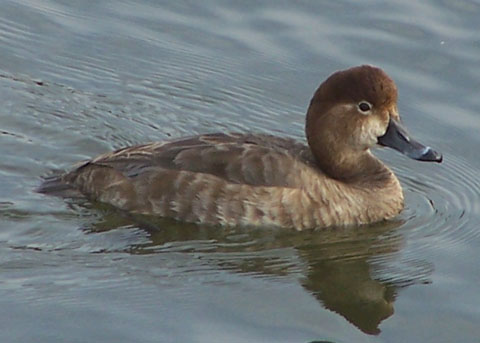Reproduction
Used from permission by the US government Found at: During the reproductive process, the female stands up tall and jerks her head up and down, and then holds it erect. The male will then follow by standing erect and twirling around, showing her his backside. The female may follow by nipping at the male or may swim and intersect his path. If a female is focusing her attention on more than one male at a time, the males will attempt to drive each other away.
Redhead Ducks tend to pair in late winter, but this behavior can be seen up into the month of April. The males desert the females once incubation begins.
(Bellrose, 1976; Kortright, 1942)
Breeding season for the Redhead Duck tends to begin in late April to early June. Females begin to nest in the midsummer in marshes and potholes of the prairies. Nest sites are often located over water, on islands, or on dry land and are covered by dense vegetation. Water must always be nearby.
Redheads have three different egg-laying strategies. These are described as normal, semi-parasitic, and parasitic. The normal egg-laying strategy is when the female lays and incubates her own eggs. The semi-parasitic egg-laying strategy is much like the normal strategy, however, females will lay eggs in others’ nests as well as their own. The last strategy, parasitic, is when the female duck will lay all of her eggs in other duck’s nests. This often occurs after incubation has already begun. The eggs that are from the parasitic strategy often may not hatch due to the time they began incubation. On average, a female will lay one egg a day, but will skip a few days before the clutch is complete.
(Bellrose, 1976; Kortright, 1942)
